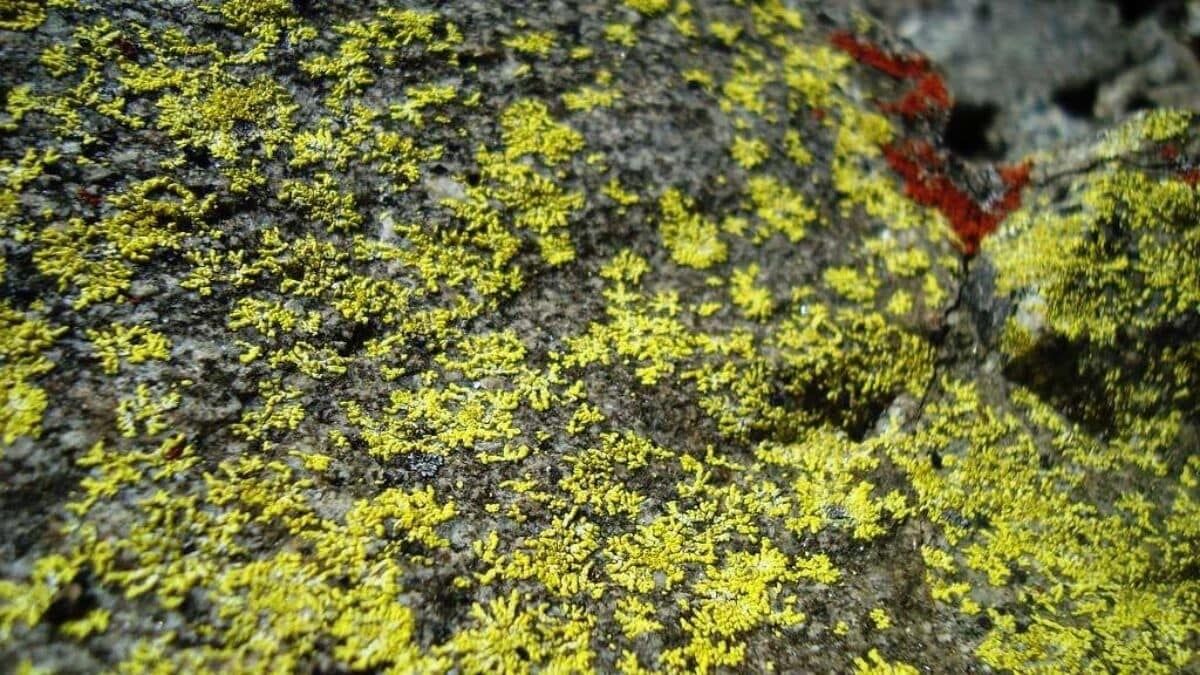PIB Summary - 19th July 2025 | PIB (Press Information Bureau) Summary - UPSC PDF Download
New Lichen species reveals ancient symbiosis in the Western Ghats

Introduction
A recent scientific study has led to the discovery of a new species of lichen, Allographa effusosoredica, in the Western Ghats, a region known for its rich biodiversity. This finding is significant for several reasons, including its contribution to lichen taxonomy and our understanding of symbiotic relationships in nature.
Taxonomic Significance
The discovery of Allographa effusosoredica marks the first time an Allographa species in India has been confirmed through molecular sequencing. This milestone highlights the advancements in lichen taxonomy and the importance of molecular methods in identifying new species. The research was conducted by the MACS-Agharkar Research Institute in Pune, with funding from the Anusandhan National Research Foundation under a polyphasic taxonomic project.
Symbiotic Complexity
Lichens are complex organisms formed through a symbiotic relationship between a fungal partner, known as the mycobiont, and a photobiont, which is usually a type of green algae or cyanobacteria. In the case of Allographa effusosoredica, the photobiont identified was a species of Trentepohlia, which is significant because the diversity of photobionts in tropical lichens is not well-studied.
Interestingly, despite being closely related genetically to Allographa xanthospora, Allographa effusosoredica exhibits a morphology that resembles Graphis glaucescens, blurring the lines between different genera within the Graphidaceae family. This phenomenon offers insights into the evolutionary processes and mimicry occurring within this group of lichens.
Methodological Innovation
The research employed an integrative taxonomy approach, combining morphological, chemical, and molecular methods. This approach serves as a model for future studies on biodiversity and highlights the importance of using multiple lines of evidence in taxonomic research. The molecular markers used in the study included:
- For the fungus: mtSSU, LSU, and RPB2
- For the alga: ITS region
Additionally, the chemical profile of Allographa effusosoredica was found to contain norstictic acid, a compound that is rare among morphologically similar Allographa species. This finding enhances the chemical distinctiveness of the new species and contributes to its identification.
Ecological Role of Lichens
Lichens play a crucial role in ecosystems, contributing to soil formation, nutrient cycling, and serving as bioindicators of air and climate quality. The effuse soredia observed in Allographa effusosoredica aid in vegetative dispersal, suggesting the species' resilience and potential to colonize diverse habitats. This adaptability is essential for maintaining biodiversity and ecosystem health.
Geographical and Biodiversity Significance
Allographa effusosoredica is the 53rd Allographa species documented in India and the 22nd from the Western Ghats. This highlights the microendemism and richness of the region, emphasizing the need for further molecular exploration of Indian lichen biota, particularly in ecologically sensitive areas. The Western Ghats, a UNESCO World Heritage Site, is home to a vast array of plant and animal species, making it a critical area for biodiversity research and conservation.
Conclusion
The discovery of Allographa effusosoredica underscores the importance of molecular taxonomy in understanding and conserving biodiversity. It also highlights the Western Ghats as a hub of microbial biodiversity, with a pressing need for ongoing research to explore and document the region's rich and varied lichen flora.
Keywords: Polyphasic taxonomy, Trentepohlia, norstictic acid, Graphidaceae, bioindicators, Western Ghats endemism.
Potential Questions:
- What role do lichens play in ecosystems?
- Why is molecular taxonomy significant for biodiversity conservation?
- How do the Western Ghats contribute to microbial biodiversity?
INS Nistar, first indigenously designed & constructed Diving Support Vessel, commissioned in Vizag

INS Nistar: A Historic and Technological Achievement
- Introduction: The INS Nistar, India’s first diving support vessel (DSV) designed and built entirely in the country, was commissioned into the Indian Navy on July 18, 2025, in Visakhapatnam.
- Builder: The vessel was constructed by Hindustan Shipyard Limited (HSL) as part of the ‘Aatmanirbhar Bharat’ initiative.
- Ship Type: The INS Nistar is a Diving Support Vessel equipped for deep-sea saturation diving and submarine rescue operations, a capability possessed by only a few advanced navies worldwide.
Technical Specifications
- Length and Displacement: The vessel measures 118 meters in length and has a displacement of over 10,000 tons.
- Operational Depth: The INS Nistar is capable of diving and salvage operations at depths of up to 300 meters.
- Advanced Systems: The vessel is equipped with state-of-the-art systems, including:
- Remotely Operated Vehicles (ROVs)
- Self-Propelled Hyperbaric Life Boats (SPHLB)
- Diving Compression Chambers
- Mother Ship Role: The INS Nistar serves as a “Mother Ship” for Deep Submergence Rescue Vessel (DSRV) operations, facilitating personnel rescue from distressed submarines operating at great depths.
Strategic and Regional Significance
- Operational Enabler: According to Naval Chief Admiral Dinesh K Tripathi, the INS Nistar is “more than a technological asset”—it is a force multiplier for underwater operations.
- Enhancing India’s Role: The vessel strengthens India’s position as:
- A ‘First Responder’ in regional maritime crises
- A ‘Preferred Submarine Rescue Partner’ for friendly nations in the Indo-Pacific
- Undersea Warfare Preparedness: The INS Nistar bolsters India’s capabilities in undersea warfare, submarine survivability, and salvage response.
Indigenisation and Industrial Involvement
- Indigenous Content: Over 80% of the vessel’s components are indigenous.
- MSME Participation: More than 120 Micro, Small, and Medium Enterprises (MSMEs) were involved in the construction of the INS Nistar.
- Part of Indigenous Pipeline: The vessel is part of the pipeline of 57 warships currently under indigenous construction, aligning with the ‘Aatmanirbhar Bharat’ and Make in India initiatives in the defence sector.
Policy and Defence Ecosystem Integration
- Support from Authorities: The project is supported by the Department of Defence Production and the Indian Navy’s shipbuilding roadmap.
- MSME-DRDO Linkage: The integration of MSMEs with the Defence Research and Development Organisation (DRDO) has contributed to the project.
- Maritime Industrial Base: The INS Nistar project boosts India’s maritime industrial base and indigenous design capacity for complex support vessels.
- Public-Sector Revival: The project demonstrates the revival of public-sector shipyards and their capability to construct heavy displacement vessels with advanced technology.
Broader Geostrategic Context
- Naval Leadership: The INS Nistar reaffirms India’s leadership in maritime domain awareness (MDA) and humanitarian assistance and disaster relief (HADR) operations.
- Regional Security Ties: The vessel strengthens regional security ties by offering submarine rescue interoperability with Indian Ocean Region (IOR) navies.
- Net Security Provider: The project contributes to India’s aspiration of becoming a net security provider in the Indo-Pacific region.
Value Addition
- Saturation Diving: This is a diving technique that allows extended operations at great depths, requiring pressurized environments.
- DSRV System: The Deep Submergence Rescue Vehicle (DSRV) system is a specialized submarine rescue system used worldwide, such as by the US Navy’s Mystic class and the UK’s NATO Submarine Rescue System.
- INS Nistar Legacy: The vessel is named after a ship from the 1971 Indo-Pak war that was used for deep-sea rescue and salvage, reviving naval heritage.
FAQs on PIB Summary - 19th July 2025 - PIB (Press Information Bureau) Summary - UPSC
| 1. What is the significance of the new lichen species discovered in the Western Ghats? |  |
| 2. What is INS Nistar and why is it important for the Indian Navy? |  |
| 3. How does the commissioning of INS Nistar reflect India's advancements in defense technology? |  |
| 4. What role do lichens play in their ecosystems, and why is their study important? |  |
| 5. How can the discoveries like new lichen species and technological advancements like INS Nistar impact environmental conservation and national security? |  |
















